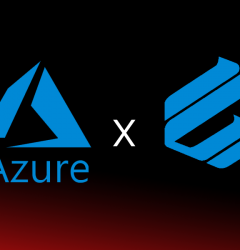- Email:support@comtek-services.in
- phone:+011-4605-4953
19 Jan

As the world is gradually returning to a sense of normalcy, professionals are attempting to summarise the impact this past year had on multiple businesses especially the travel industries and auxiliaries supporting tourism.
The reports show how positive sentiment from the public has contributed to the consistent increase in sales experienced by the retailers offering non-essential consumer products. The majority of the FMCG industry noted that the sales were more or less unaffected, as a bulk portion of their products overlapped with the essential goods. One of the rather essential category item producers, Pril, the dishwasher soap brand shared that since the pandemic struck, people were more likely to eat home-made food, which directly impacted the use of their product allowing sales to significantly improve.
The automobile sector was no exception to the “No profit-earning” group as each major car manufacturer brand experienced a decline in demand. Although a survey by Capgemini shows a whopping 57% of Indian consumers were willing to purchase a car in 2020. The sale of non-essential goods is now encountering a bullish phase, these growing numbers now are almost up to the Pre-pandemic sale record statistics.

The 7 Indian pharmaceutical companies that are battling to produce the vaccination include Bharat Biotech, Serum Institute, Zydus Cadila, Panacea Biotec, Immunologicals, Mynvax and Biological E. The tremendous commitment is paying off, but one might speculate “How long vaccine is going to effective?”. Director-General of ICMR, Dr. Balram Bhargava shared his views when he said “We don’t know how much of the population we’ll have to vaccinate to break the virus transmission. What we know is that we’ve been able to control the pandemic in the country by following COVID appropriate behaviour.”
He even added, “I believe that masks will probably be the last to go & probably may never even go.”
The comment Dr. Bhargava made might be scary in foresight Nevertheless, it also offers a simple suggestion to do your part by following guidelines strictly moreover adapting to the situations wisely. Most Universities and Schools around the globe are carrying out basic operations and conducting classes online. The Work-From-Home method is maturing into a routine. History is proof of the well-known proverb, “Necessity is the cause of Innovation”. Travel agencies and DMCs along with the Local Service provides are exploring newer and more extensive avenues to thrive in the current market. People travelling from different nationalities might have diverse preferences for payments. Other than the diversity in their origin, travellers might be comfortable with different modes of payment.

The payment methods include:
- Using their bank to complete an international wire transfer. The method however is slow, tedious and offered at a hefty charge. So, it might not be the best choice for most people.
- Using a prepaid debit card which allows foreign transactions topped up with the money needed for the trip. It might work for some people even though it has approx 2-3% charge on each transaction, an initial activation charge as well as a yearly fee.
- Credit card: According to Statista.com, the preferred payment method in the United States in 2019 Credit cards were the most used payment method in the United States in 2019, with nearly 40 percent of point of sale payments were being made by credit card. It has a small fee ranging from 1 to 4% on each transaction.
- Using Remittance services still stands as one of the most popular methods. Although, the travellers are required to pay the charge on the transaction which could be somewhere between 1-5% and an additional charge on the exchange rate as it’s a fluctuating commodity.
- Traveller’s cheques are great as they offer a greater sense of security and liquidity almost equivalent to cash. These cheques can be purchased from respective banks and can be exchanged for the currency of destination.
- Applications like Wechat: One of the prime examples of a community choosing a revolutionary method is China. Wechat is the most dominant means of transactions in the Chinese market.
- Cash-transactions: In an economy like relatively tech-savvy India, the majority of consumers choose payments via Cash.

There are over 150 payment methods in our growing global market. It is rather interesting to ponder what happens when Bitcoin enters this market or if Blockchain along with IoT causes another revelation.
It is crucial for the Travel Industry Players to enhance customer service and offer a mix of local and international payment methods. The requirement for these businesses is now expanding because of the disruptions caused by COVID-19. The methods need to be fast, convenient and with limited human interaction.
- It is of most importance that the Team is aware of their audience: Learn about the nationalities, languages, volume from each geographical zone. The questions needed to be solved include: “Where is my maximum volume
- Data analytics has never been more relevant in the industry. The professionals need to ensure no method is ignored or eliminated because of reduced volume.
- The volume of travellers might take some time to recover. Agility is as important as innovation and during this course, flexibility is one hallmark to develop. Payments in installments can be an incredible extension.
- The channels of payment and the chain of communications need definition and each method needs to be centralized. The primary goal is to optimize channels for customers to contact your team.
- The secondary goal is to generate the maximum organic business, offer comfort over conventional, most importantly make cross-border payments comfortable for your audience.








